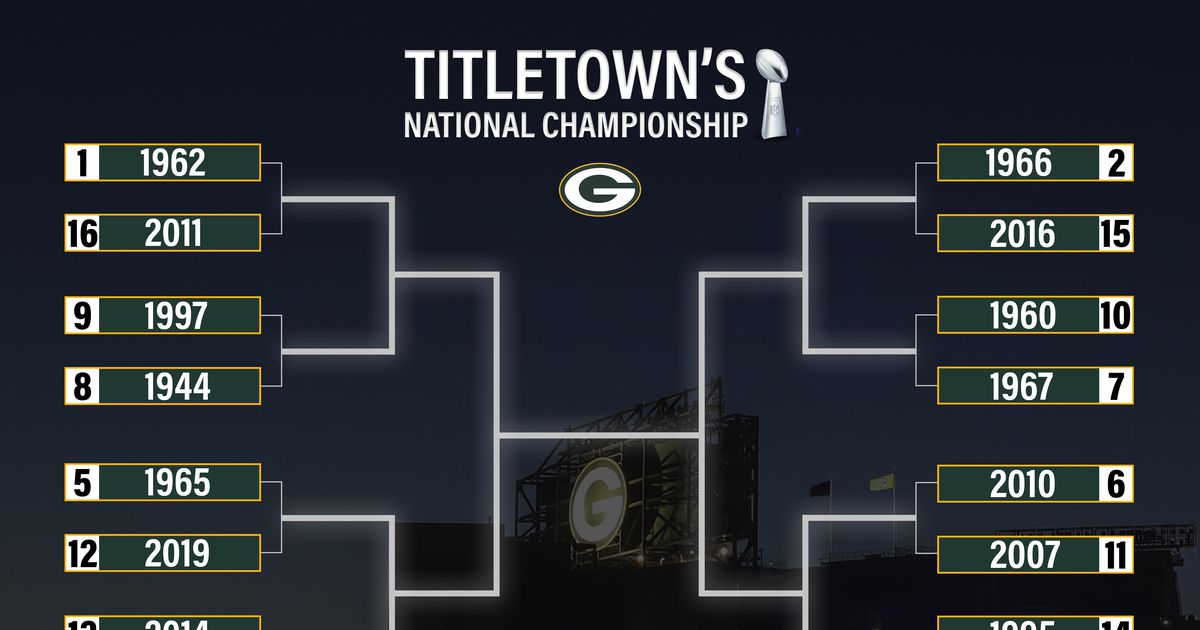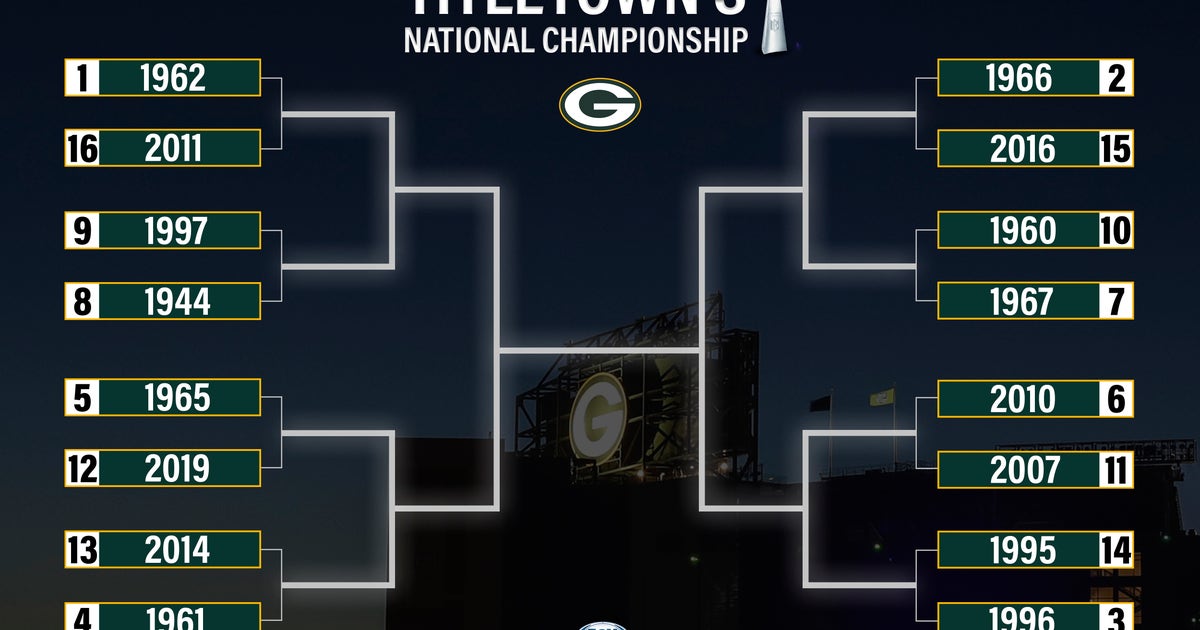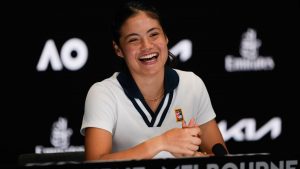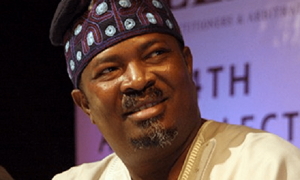All-time Green Bay Packers tournament: Bracket, seeds, team capsules


In case you haven’t heard, we’re killing some time during these strange sports-less days by putting together a simulated Green Bay Packers tournament that will decide, once and for all, the best team in franchise history. For more information on how the tourney will be structured, click here. For capsule summaries of the 16 seeded teams in our Lam-Bowl tournament, read on:
(Click here for a printable PDF of the bracket. Print it out, fill it in and post a picture of your bracket on Twitter using the hashtag #PackersAllTimeTournament)
1962 (13-1, No. 1 seed)
Vince Lombardi’s second championship team was his most dominant. Green Bay went 13-1 – with the lone loss coming at Detroit on a short week on Thanksgiving – and had a point differential of plus-267. Unsurprisingly, the Packers led the NFL in both points scored (415) and points allowed (148). Quarterback Bart Starr completed 62.5% of his passes and threw for 2,438 yards. NFL MVP Jim Taylor led the league with 1,474 rushing yards and 19 touchdowns. The defense featured five All-Pros – Herb Adderley, Willie Davis, Bill Forester, Henry Jordan and Dan Currie. In addition, Willie Wood led the NFL with nine interceptions. The Packers would defeat the New York Giants in the NFL championship 16-7.
Packers All-Time Tournament
1966 (12-2, No. 2)
The eventual winner of Super Bowl I allowed nearly 60 fewer points than any other team in the NFL (163). The defense once again featured five first-team All-Pros: Adderley, Lee Roy Caffey, Davis, Ray Nitschke and Wood. The defense collected 28 interceptions while NFL MVP Starr threw only three in 251 attempts. He completed 62.2% of his passes and had a 105.0 passer rating – no QB would post that high a passer rating again until Dan Marino in 1984. Taylor rushed for only 705 yards and four TDs but also had a team-high 41 catches for 331 yards and two TDs. Carroll Dale led receivers with 876 yards and seven TDs. Green Bay stormed through the NFL West with a 12-2 record, beat Dallas in the NFL championship 34-27 and then topped Kansas City in the first Super Bowl 35-10.
1996 (13-3, No. 3)
Green Bay’s first Super Bowl winner in nearly 30 years got it done on both offense and defense. The Packers led the NFL in both points for (456) and against (210) and their plus-246 point differential was nearly 100 greater than any other team (Carolina, +149). NFL MVP Brett Favre threw for 3,899 yards and 39 touchdowns with Antonio Freeman (56 catches, 933 yards, nine TDs) his favorite target. Tight end Keith Jackson, though, had the team’s most receiving TDs (10). Edgar Bennett rushed for 899 yards but it was Dorsey Levens who was the running back who found the end zone (566 rushing yards, 5 TDs; 226 receiving yards, 5 TDs). A solid defense had only one All-Pro – safety LeRoy Butler (87 tackles, five interceptions) and two Pro Bowl selections – Butler and defensive end Reggie White (8.5 sacks) but still allowed only 3.5 yards per rush and had 26 INTs. Punt returner Desmond Howard averaged 15.1 yards per return with three touchdowns. The Packers rolled through the playoffs, winning all three of their games by 14 or more points, including in the Super Bowl against New England.
1961 (11-3, No. 4)
Lombardi’s first championship team easily won the NFL West with an 11-3 record and league-best plus-168 point differential (next best were Detroit at 8-5-1 and San Francisco with a plus-74) before throttling the East winner, the New York Giants, 37-0 in the championship. Taylor ran for 1,307 yards and 15 TDs and caught 25 passes for 175 yards and a TD but it was Paul Hornung who was named the NFL MVP. Hornung rushed for 597 yards and eight TDs, caught 15 passes for 145 yards and two TDs, threw a TD pass (he was 3 for 5 for 42 yards) and, as the team’s kicker, made all 41 of his extra-point attempts and hit 15 of 22 field-goal attempts. Starr didn’t have his best season, throwing as many INTs as TDs – 16. The defense was anchored by the usual suspects and four players – Hank Gremminger, John Symank, Jesse Whittenton and Wood each had five INTs (the team had 29 picks and 46 takeaways, second in the league, overall).
1965 (10-3-1, No. 5)
After missing out on the playoffs the previous two seasons, Green Bay had to make the NFL championship by beating Baltimore, which had tied the Packers for the top spot in the NFL West. A 13-10 win over the Colts followed by a 23-12 victory over Cleveland and Lombardi and Green Bay were champs once again. The defense was a big reason for Green Bay’s success, allowing a league-low 224 points. Adderley, Davis and Wood were all named first-team All-Pro. The offense scored 316 points, which was eighth in a 14-team league. Starr completed just 55.8% of his passes and threw for 2,055 yards. Taylor couldn’t even muster 1,000 total yards (734 rushing, 207 receiving) and had four TDs. Boyd Dowler led with 44 receptions and 610 yards while Hornung had eight combined TDs.
2010 (10-6, No. 6)
The regular season didn’t portend the Packers’ postseason success. Green Bay was 8-6 before back-to-back wins got them the No. 6 seed in the playoffs. Aaron Rodgers completed 65.7% of his passes for 3,922 yards and 28 TDs with four receivers topping 500 yards: Donald Driver (565, 4 TDs), Greg Jennings (1,265, 12 TDs), James Jones (679, 5 TDs) and Jordy Nelson (582, 2 TDs). The run game wasn’t as efficient, averaging just 3.8 yards a carry (which was boosted by Rodgers’ 356 yards, 5.6 average). Brandon Jackson led the backs with 703 yards (3.7 avg.) and three TDs. The defense allowed just 240 points, fewest in the NFC (only Pittsburgh with 232 had fewer). Two linebackers had over 100 tackles (Desmond Bishop and A.J. Hawk) and another – Clay Matthews, who had 13.5 sacks – was named All-Pro. Nick Collins, Charles Woodson and Tramon Williams anchored a solid secondary. The Packers became just the second sixth seed to win the Super Bowl, beating Philadelphia, Atlanta and Chicago in its run to the NFC crown before beating the Steelers, 31-25 for their first title since 1996.
1967 (9-4-1, No. 7)
Lombardi’s last championship team had neither the best offense nor defense in the NFL yet somehow managed to win the second Super Bowl. Starr had an abysmal season – 54.8% completions, nine TDs and a career-worst 17 INTs (and the team still went 8-3-1 in the games he started). No one rushed for 500 yards (three had 400+ — Donny Anderson, Jim Grabowski and Ben Wilson) but two receivers topped 700 yards – Dale (738, 5 TDs) and Dowler (836, 4 TDs). Rookie Travis “Roadrunner” Williams provided a boost – setting an NFL record (since tied) with four touchdowns on kick returns (he’d have only 18 returns and average 41.1 yards). Cornerback Bob Jeter had eight interceptions and he, linebacker Dave Robinson and Wood were named first-team All-Pro. Green Bay allowed just 4.1 yards per play and 4.9 yards per pass attempt. Despite losing their last two games, including one to the Rams, Green Bay beat Los Angeles in the playoffs then Dallas in the infamous Ice Bowl in the NFC championship before steamrolling Oakland 33-14 in Super Bowl II.
More Packers coverage
1944 (8-2, No. 8)
How much has the game changed since World War II? Green Bay’s Irv Comp led the NFL with 1,159 passing yards. Also, he played halfback in the Packers’ “box” formation. Hall of Famer Tony Canadeo was the other halfback but played in just three games before leaving for the military. Of the 105 completions thrown by Green Bay passers, Hall of Famer Don Hutson caught 58 of them, for 866 yards and nine TDs. In an era of two-way football, Comp had six interceptions as did Ted Fritsch, who also played fullback. Hutson had four. The Packers beat the Giants in the NFL championship 14-7 on two second-quarter touchdowns by Fritsch – one rushing, the other a 28-yard pass from Comp.
1997 (13-3, No. 9)
Favre won another MVP after throwing for 3,867 yards with 35 TDs and 16 INTs, leading Green Bay to the best point differential in the NFC. The Packers’ dynamic offense included a 1,000-yard rusher (Levens with 1,435 and 7 TDs) and two 1,000-yard receivers (Freeman, 81-1,243-12, and Robert Brooks, 60-1,010-7). Meanwhile, the swarming defense had four players with 100+ tackles – safeties Butler (who also had five INTs) and Eugene Robinson and linebackers Bernardo Harris and Brian Williams. White had another double-digit sack season, with 11. Green Bay would make it back-to-back Super Bowl years after convincing wins over Tampa Bay and at San Francisco, but came up short in its quest for a repeat championship vs. Denver.
1960 (8-4, No. 10)
The dynasty was forming but not quite there yet. Green Bay finished second in the NFL in both points for and against and eventually suffered the first – and only – postseason defeat of Lombardi’s Packers head coaching tenure. Green Bay had a lethal 1-2 punch in the backfield as Taylor rushed for 1,110 yards and 11 TDs and Hornung for 671 yards and 13 TDs. The quarterback play was not strong with Starr (57.0%, 1,358 yards, 4 TD, 8 INT) and Lamar McHan (36.3%, 517 yards, 3 TD, 5 INT). Nevertheless, somehow Max McGee averaged 20.7 yards per catch (38-784-4). Bill Forrester and Henry Jordan were All-Pros. The pieces were forming as Nitschke, in his third year, made six starts and Davis joined the team after two seasons with Cleveland. The Packers lost to Philadelphia, 17-13, in the NFL championship.
2007 (13-3, No. 11)
These Packers were a well-balanced team which led the NFC in point differential (+144) and ran away with the NFC North (Minnesota was second at 8-8). Defensively, the Packers had a strong defensive line which pressured opposing quarterbacks often. Aaron Kampman led the way with 12 sacks, Kabeer Gbaja-Biamila had 9.5 and Corey Williams seven. It would be Favre’s last year directing Green Bay’s offense and he completed 66.5% of his passes (his high with the Packers) for 4,155 yards with 28 TDs and 15 INTs. Driver had 1,048 receiving yards while Jennings had 920 yards and 12 TDs. Ryan Grant, undrafted in 2005 and acquired from the Giants in September 2007 for a sixth-round pick even though he had never played an NFL game, took over as the starting running back in Week 9 and rushed for 956 yards, all but 27 of those coming in the final 10 games. Green Bay rolled past Seattle in the divisional game but lost at home to the Giants in overtime at Lambeau Field in the NFC championship, a Favre interception – his last pass as a Packer – setting up a game-winning field goal.
2019 (13-3, No. 12)
A new era of Packers football, under head coach Matt LaFleur, resulted in a divisional title and NFC championship appearance. Also new: a bolstered defense thanks to free agency. Two of those signings were linebackers Preston Smith and Za’Darius Smith, who had 12 and 13.5 sacks, respectively. Aaron Jones accounted for 19 TDs while rushing for 1,084 yards and catching 49 passes for 474 yards, one of five Packers with 400+ receiving yards. Davante Adams led the crew with 83 catches for 997 yards and five TDs. Now 36 and with a new coach and offensive coordinator, Rodgers threw for 4,002 yards with 26 TDs and only four INTs.
2014 (12-4, No. 13)
Bouncing back after missing seven games in 2013 due to a broken clavicle, Rodgers was back in prime form and won his second MVP award after passing for 4,381 yards with 38 TDs and five INTs with a 65.6% completion percentage while leading the Packers to the most points (486) in the NFL. Randall Cobb (1,287 yards, 12 TDs) and Nelson (1,519, 13 TDs) were the main beneficiaries of Rodgers’ targets. Eddie Lacy paced the ground game with 1,139 yards rushing and nine TDs. Morgan Burnett (130 tackles) and Matthews (11 sacks) starred on defense. The less we talk about the championship game loss in Seattle probably the better.
1995 (11-5, No. 14)
This was the first of three straight divisional titles for the Packers under head coach Mike Holmgren. Green Bay finished fourth in the NFL in points allowed and sixth in points for. Favre won his first MVP and threw for over 4,000 yards (4,413) for the first time while throwing 38 TDs and 13 INTs. Edgar Bennett ground out 1,067 yards rushing (3.4 average) and also caught 61 passes (second on the team) for 648 yards (third). Brooks had the best year of his career, catching 102 passes for 1,497 yards and 13 TDs. Butler led the team in tackles (102) and interceptions (5) while White had a team-high 12 sacks. The Packers made it to the NFC championship with wins over Atlanta and San Francisco before losing to Dallas. Their time would come a year later.
2016 (10-6, No. 15)
In Mike McCarthy’s last playoff appearance (and winning season) as Packers head coach, Rodgers had a career-high 401 completions, threw for 4,428 yards and led the NFL with 40 TD passes. He also ran for 369 yards, second-most on the team. Eddie Lacy had 360 yards but was lost after five games after injuring his ankle and never played for Green Bay again. Ty Montgomery (457 yards) ended up as the Packers’ leading rusher. Nelson had another big year receiving, with 1,257 yards and 14 TDs while Davante Adams came into his own with 997 yards and 12 TDs. A young defense allowed the 21st most points in the NFL. Green Bay sat at 4-6 after Week 11 but reeled off six straight wins to close the season then two more in the playoffs before losing at Atlanta in the NFC championship.
2011 (15-1, No. 16)
An offensive juggernaut, the Packers racked up 560 points (35.0 per game), at the time the second-most in NFL history (currently fourth highest), and raced out to a 13-0 start. MVP Rodgers set career highs in completion percentage (68.3%), passing yards (4,643) and touchdowns (45). Plenty of receivers were the benefactors. Nelson led the way with 68 catches for 1,263 yards and 15 TDs while Jennings (67-949-9), tight end Jermichael Finley (55-967-8) and James Jones (38-635-7) all had big years. Even veteran Donald Driver had 445 yards and six TDs. Grant (559 yards) and James Starks (578) paced the run game although fullback John Kuhn led in rushing touchdowns (4). Once again, the defense wasn’t the strongest, although Charles Woodson had seven interceptions and was named first-team All-Pro. But the great season ended with a thud. Despite having the league’s best record, the Packers lost to the 9-7 Giants in the playoffs in the divisional round.









